
Gambero Rosso showcased the winners of its famed annual Tre Bicchieri wine award on March 10, 2023 at the Metropolitan Pavilion in New York City and, as usual, there were absolutely no disappointments. Winning wineries from virtually all of Italy’s most notable winemaking regions were in attendance, along with media and trade, glass in hand, ready to taste this year’s best vintages. Italy is arguably the most diverse winemaking region in the world, and everything from sparkling and white, to rose’ and red wines, were poured. It would be almost impossible to cover every one, two, and three Tre Bicchieri award-winning wine offered that day so here are a few highlights.
The sparkling wines were a big hit with the crowd. I tried a wonderful Trentodoc from Trentino, a beautiful spumante from Oltrepò Pavese, and some fantastic Franciacorta from Lombardy. Trentodoc is produced in the northern Italian region of Trentino. Trentino was one of the first regions to receive a DOC for its sparkling wines. Trentodoc is crafted using Chardonnay, Pinot Bianco, and Pinot Nero (Pinot Meunier is cultivated in very small quantities). It’s produced using the traditional method of a second fermentation in the bottle. The neighboring Dolomites infuse the region’s typically calcareous soil with volcanic and mineral elements, giving Trentodoc its distinctly crisp and racy quality. Many vineyards are also situated at high elevations. Trentodoc is lively and refreshing, with a bright acidity, a balanced salinity, and a soft citrus fruit character. There are three classifications of Trentodoc based on the amount of time the juice spends on its lees. The minimum requirement for each classification is as follows:
Non-vintage (15 months)
Millesimato (24 months)
Riserva (36 months)
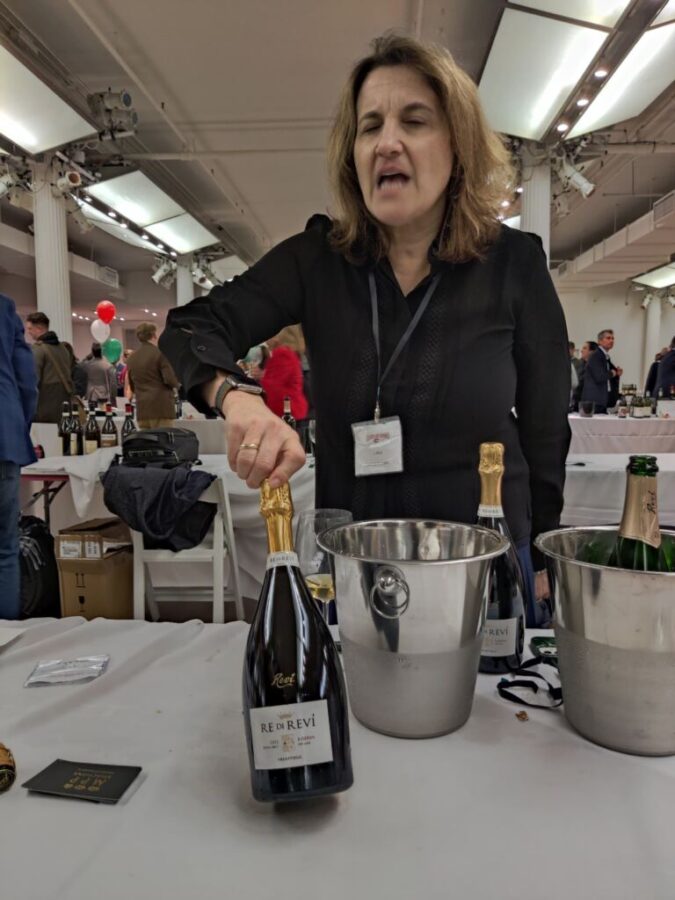
The Revi, Re di Revi, Extra Brut Riserva, 2012 had a fine and persistent mousse, and ripe lemon, grapefruit, apricot, and baked quince, as well as turmeric and brioche notes.
Franciacorta is a traditional method sparkling wine produced in the northern Italian region of Lombardy. Franciacorta is produced using Chardonnay, Pinot Nero, Pinot Bianco, and Erbamat (since 2019). Franciacorta was the first traditional method sparkling wine-producing region in Italy to be awarded a DOCG. Minimum aging requirements govern the production of Franciacorta DOCG sparkling wines.
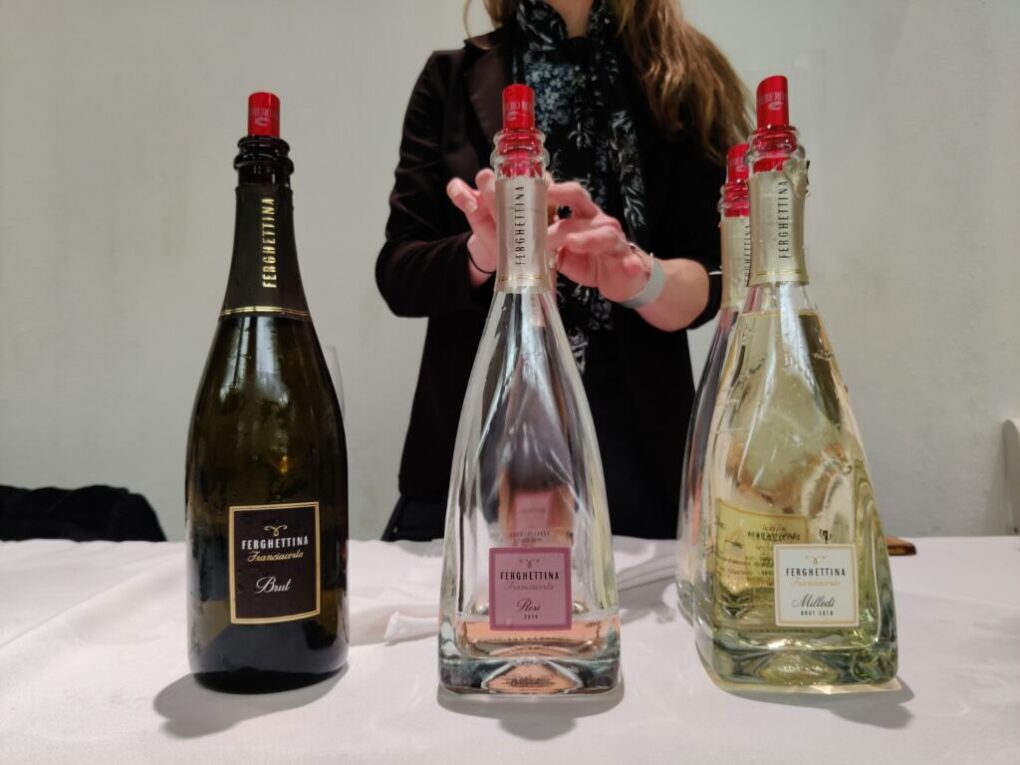
The Ferghettina, Rose’, 2018 is crafted from 100% Pinot Noir. It had delicate and persistent bubbles, and fresh mixed red and dark berry, as well as toast and almond notes.
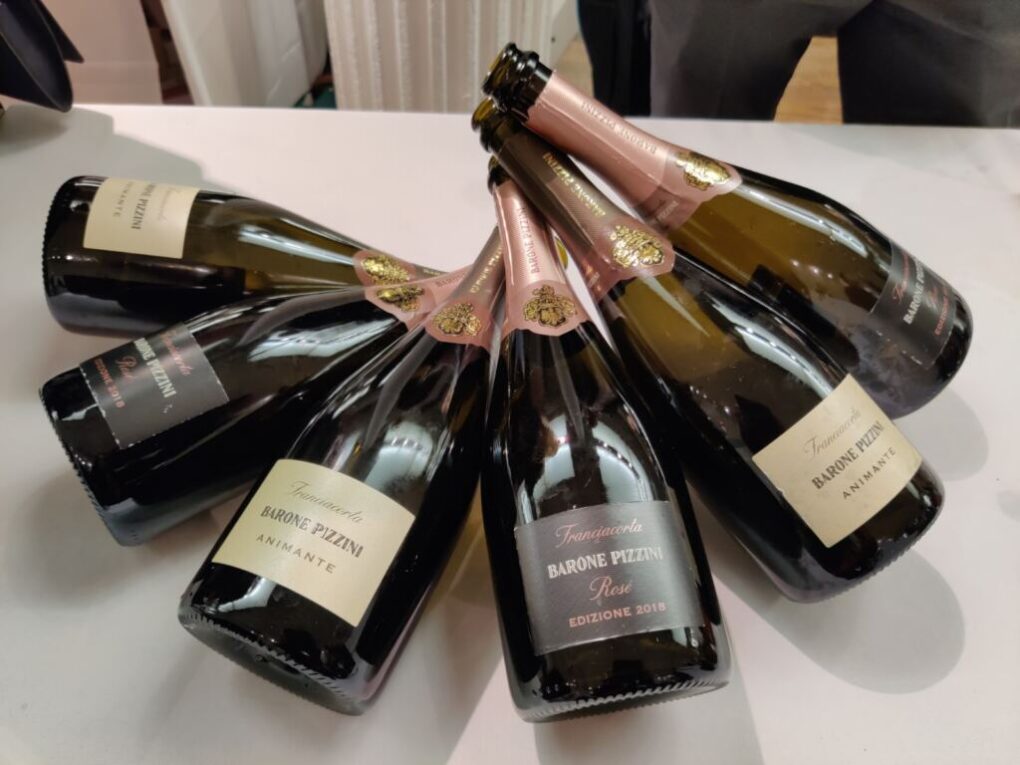
The Barone Pizzini, Animante, Extra Brut is produced from a blend of Chardonnay and Pinot Noir. It had a soft and velvety effervescence, and ripe citrus and orchard fruit, as well as smoke, toast, and mineral notes.
Barone Pizzini, Edizione 2018, Extra Brut Rose’ is produced from a blend of Chardonnay (80%), and Pinot Nero (20%). It had a rich and energetic effervescence, and fresh raspberry, lemon, and grapefruit, as well as slate, brioche, and rose petal notes.
Barone Pizzini is a forerunner in biodynamic wine production in the region.
Oltrepò Pavese is a sparkling wine-producing area in northwest Lombardy. White, rose’, and red sparkling wines with varying levels of effervescence including vivace, frizzante, and spumante are produced in Oltrepò Pavese. A variety of grapes ranging from international varietals such as Pinot Noir, to local varieties like Croatina (the red wine Bonarda dell’ Oltrepò Pavese DOC, and Buttafuoco dell’ Oltrepò Pavese DOC, as well as the naturally, gently effervescent wine Sangue di Giuda are made with this grape), are cultivated in Oltrepò Pavese. Oltrepò Pavese is also a site of Oltrepò Pavese Metodo Classico DOCG sparkling wine production.
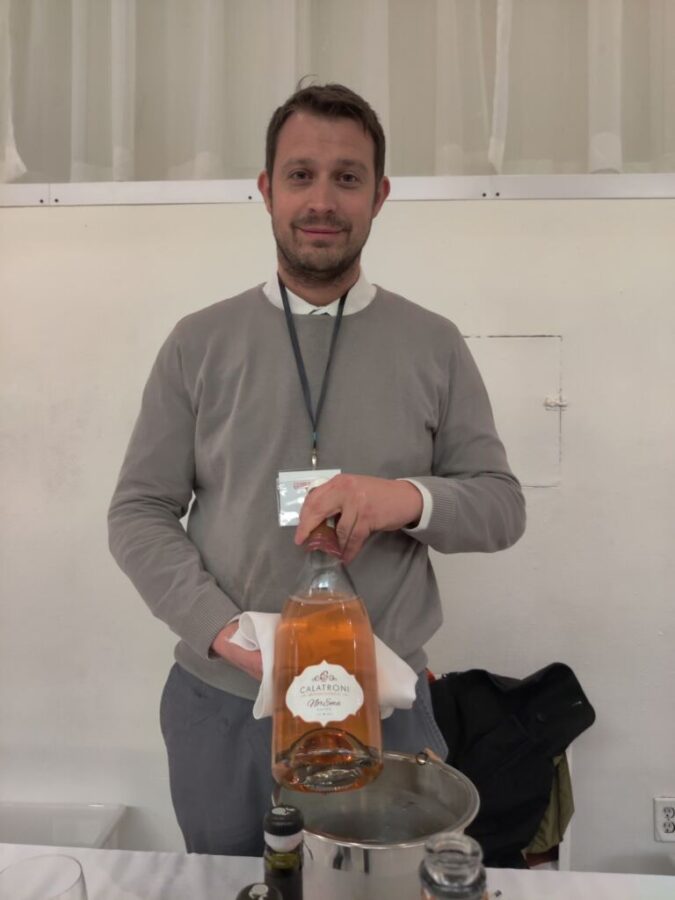
The Calatroni, Norema, Pinot Nero Rosato, Extra Brut is crafted from 100% Pinot Noir. It had lively and intense bubbles, and floral, red currant and raspberry, as well as yeast and baked bread notes.
The region of Friuli Venezia Giulia in northeast Italy is renowned for producing some of the finest Pinot Grigio in the world. The high altitude, moderate climate, and mineral-rich soil combine to make this area prime winemaking territory.
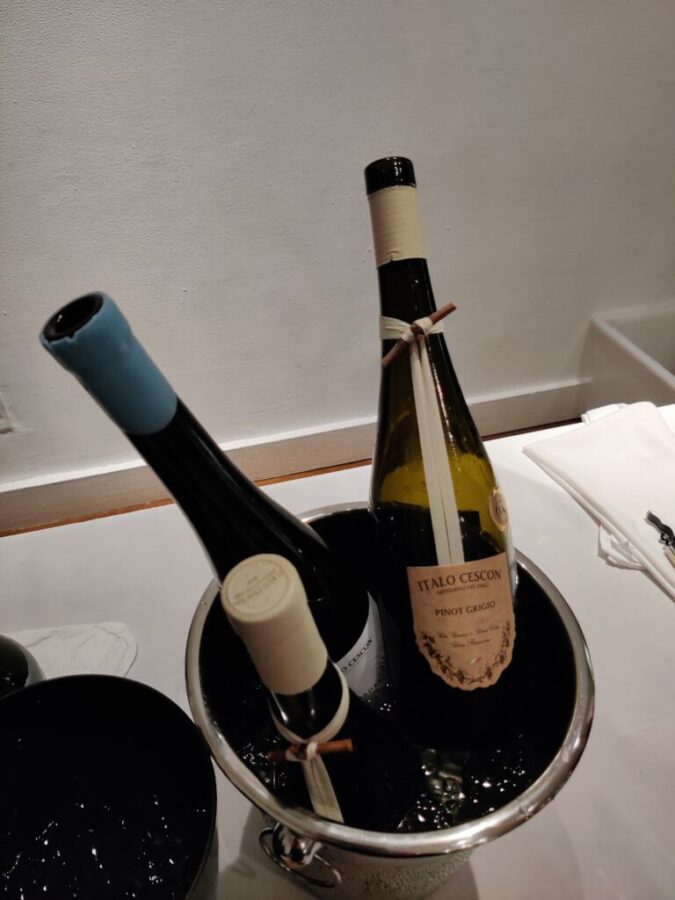
Italo Cescon showcased a soft and supple Italo Cescon Pinot Grigio with ripe peach and orchard fruit notes, a soft acidity and a delicate finish.
The winery also makes a lovely Pinot Noir that exhibited lush cherry, raspberry and slightly earthy notes, as well as a juicy acidity, and a well-rounded finish.
The highlight of Italo Cescon’s award winning portfolio was the organically produced and unfiltered Italo Cescon Madre. The wine, named for the vineyard’s matriarch, consists of 100% Manzoni Bianco, and is characterized by fresh orchard fruit, lime and herbaceous notes, and a balanced, mineral-driven finish.
Draga Miklus, another winery in Venezia, showcased a notable orange wine crafted from the white grape Ribolla Gialla, as well a classic-style Pinot Grigio.
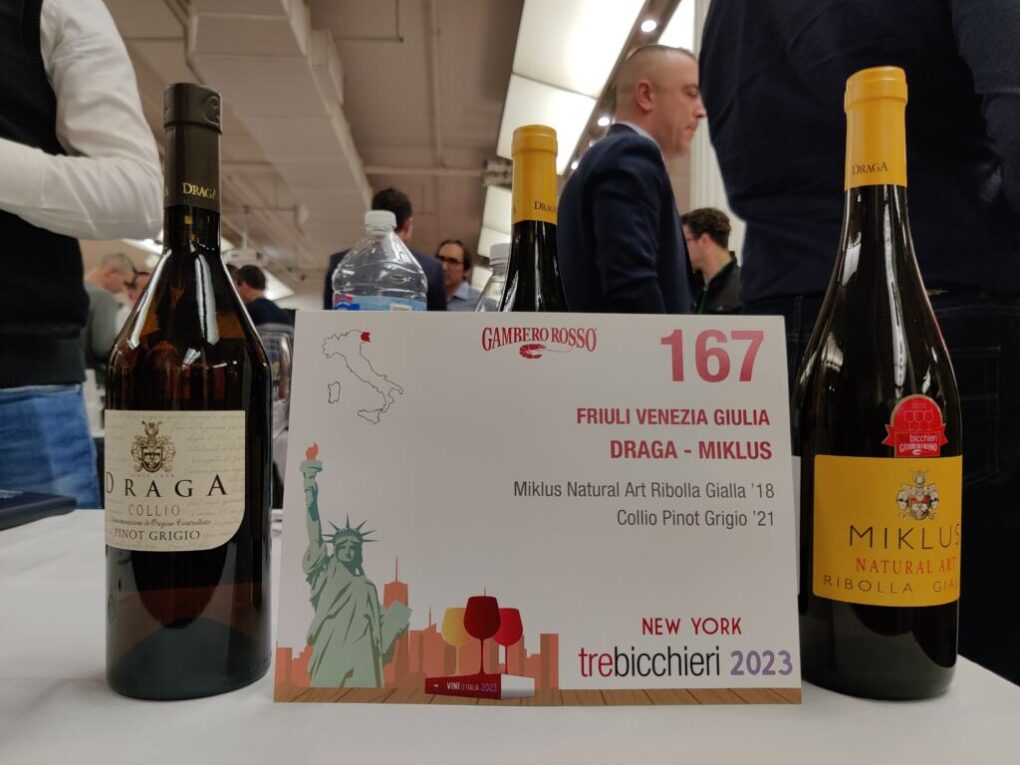
The Miklus Natural Art, Ribolla Gialla delle Venezie, 2018 was crafted with 100% Ribolla Gialla that was subject to a prolonged maceration on its skins. This process gives the wine its orange color. It had good structure, and yellow flower, sweet spice, and preserved citrus and orchard fruit notes.
The Draga Collio, Pinot Grigio, 2021 was produced using 100% Pinot Grigio. It was medium-bodied and balanced, with grapefruit, lemon, and orange, as well as cream and scented wood notes.
Abruzzo is the fifth most prolific winemaking region in Italy. This southern Italian wine country is famous for its Montepulciano, and Trebbiano-based wines. International varietals such as Chardonnay and Merlot are also cultivated here, as are native grapes like Sangiovese and Pecorino. Most vineyards in Abruzzo are situated on hillside slopes at varying elevations. These vineyards benefit from consistent cool breezes coming from the nearby Apennine mountains. The continental climate inland, marked by warm summers and cool winters, plenty of rain and sunlight, and a considerable difference between day and nighttime temperatures, support winegrowing.

The Podere Castoriani Orange Cadetto, 2021 was produced using 100% Pecorino. This orange wine was full-bodied, with dried flower and vegetation, as well as ripe apricot, peach, and fig notes.
Molise is a small winemaking region in southeast Italy. It was part of Abruzzo until 1963. It now has three DOCs and, like Abruzzo, enjoys a topography and climate that is conducive to winemaking. The predominantly morainic and calcareous soil is rich in calcium; the wines produced in this region tend to be mineral-driven. with both fresh acidity and balanced sapidity. The white grapes Trebbiano Toscano, and Bombino Bianco, along with the red varietals Montepulciano, Tintilia, and Aglianico, are typically grown here.
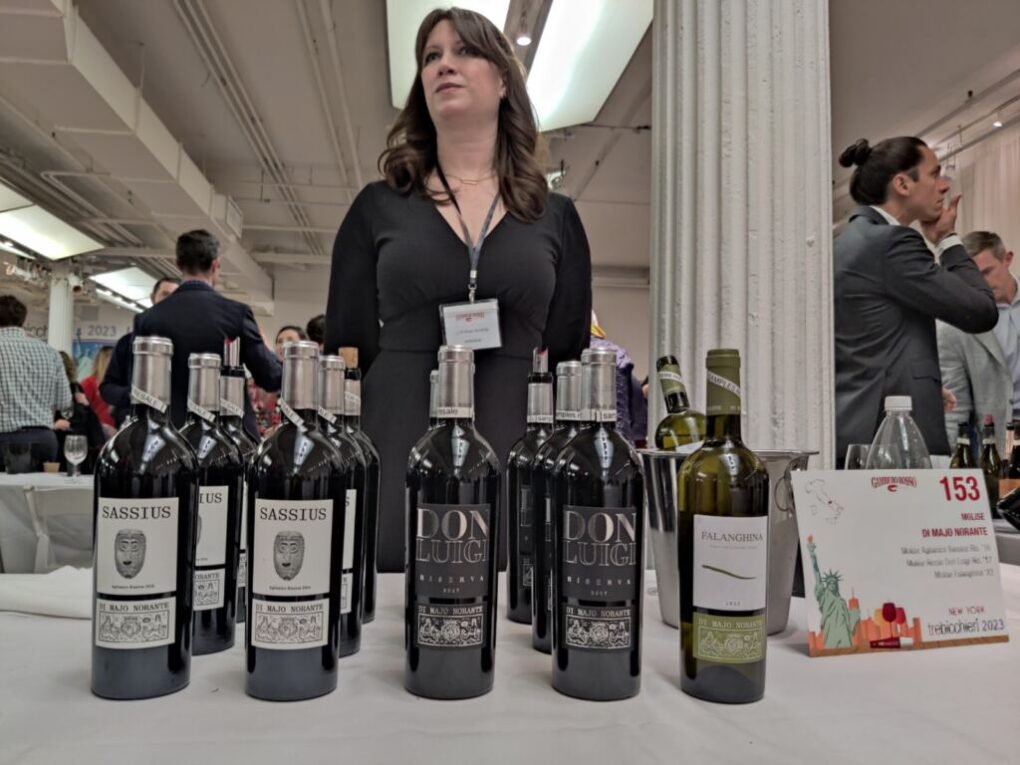
The Aglianico “Sassius” di Majo Norante, 2015 was crafted with 100% Aglianico. It was elegant and complex, with well-rounded tannins, and mixed dark berry and pepper notes.

Be First to Comment